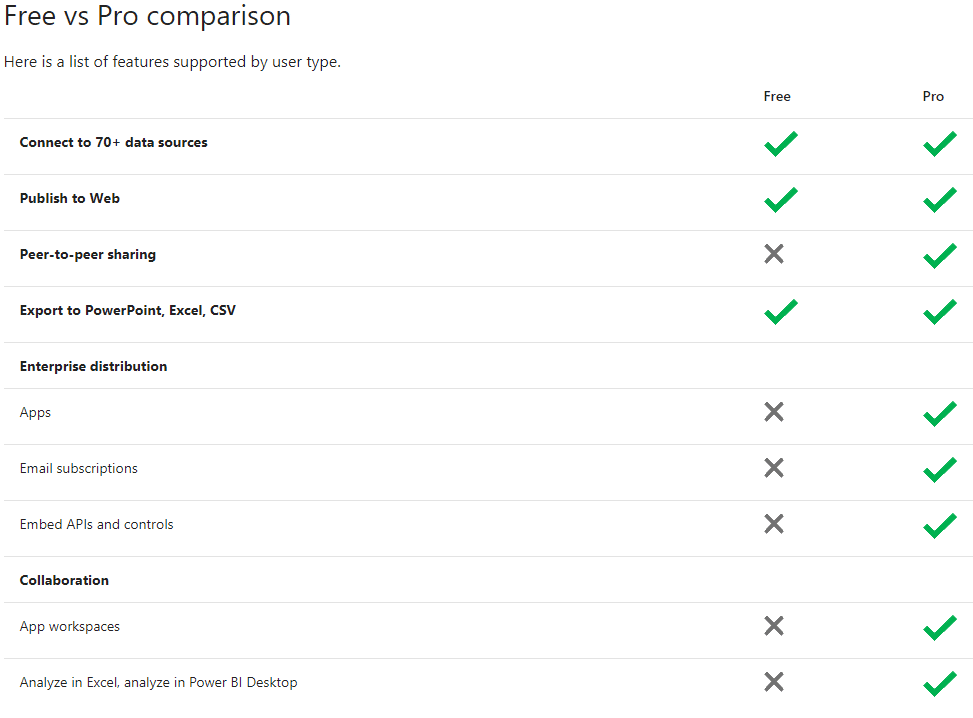What are the Differences Between Power BI Free, Power BI Pro and Power BI Premium?
I frequently get asked these types of questions regarding Power BI licenses: What’s the difference between Power BI Pro and Premium? What type of license do I need to share reports with other end users in my organization? I think I’m going to use up all my data storage for Power BI Pro, what else can I do?
These are common questions to think of when implementing Power BI. Let’s break down the types of licensing and differences between Power BI Free, Power BI Pro, and Power BI Premium, to understand this better.
Power BI Free
Power BI Free enables you to connect to 70+ data sources, publish to the web, and export to excel. There are some limitations to the free version. For example, you can’t do peer-to-peer sharing and you can’t create App workspaces. However, the free version is great if you are doing your own analysis and don’t need to distribute the analysis to other end users. You also have connectivity options such as DirectQuery, live connection, and the use of the gateway. The same visualizations that are available in Power BI Pro are available in Power BI Free.
Power BI Pro
The biggest difference between Free and Pro is that with Pro you can share your data, reports, and dashboards with other users who also have a Power BI Pro license. You can also create App workspaces. Both Power BI Free and Pro have a 10 GB per Pro user data storage limit. Here is a screenshot from Microsoft’s Power BI website that summarizes the difference.
Power BI Premium
Power BI Premium is an on-premise deployment and distribution of Power BI reports using the Power BI Report Server. This allows you to maintain reports on-premise and move to the cloud when your organization is ready.
Power BI Premium is designed to address the challenges of large enterprise deployments and workloads. It enables your organization to use your own dedicated capacity and hardware rather than relying on Microsoft’s shared capacity. You’ll need to provide that capacity and ensure you have enough for your reporting and analysis purposes. This allows for much larger scale and better performance if you size it properly. Microsoft offers three sizes for Premium capacity and each come with a different number of v-cores and memory size. If you want to learn, check out this Microsoft blog about Power BI Pro vs. Power BI Premium.
Under the terms of this license, you are authorized to share and redistribute the content across various mediums, subject to adherence to the specified conditions: you must provide proper attribution to Stoneridge as the original creator in a manner that does not imply their endorsement of your use, the material is to be utilized solely for non-commercial purposes, and alterations, modifications, or derivative works based on the original material are strictly prohibited.
Responsibility rests with the licensee to ensure that their use of the material does not violate any other rights.

